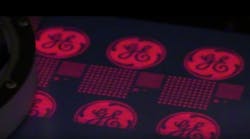The Lighting Research Center (LRC) at Rensselaer Polytechnic Institute has announced new research and publication of the National Academies Report called "Analysis of new highway lighting technologies" for the US Transportation Research Board (TRB). The report states that LEDs are ready for prime time while also finding that some high-intensity discharge (HID) technologies including ceramic metal halide (CMH) also perform well but lack the long life of solid-state lighting (SSL). The authors offer an application-oriented metric and a uniform data-sheet-based methodology that specifiers can use in evaluating luminaires for roadway projects.
The new report was authored by LRC scientists John Bullough, who served as principal investigator, and Leora Radetsky. "Technologies such as LEDs are becoming mainstream choices for roadway lighting," said Bullough. "The findings in our report can help agencies make better decisions as they face these choices."
The TRB is one of the major divisions of the National Research Council, the primary operating agency of the US National Academies charged with delivering technical information and services to the US government, the public, and scientific and engineering communities. The TRB is focused on all forms of transportation and engages annually with more than 7000 engineers, scientists, and members of academia.
The street lighting community has published any number of studies comparing LED and HID luminaires in recent years. For instance, we covered a major roadway test in Seattle, WA that was conducted by the Virginia Tech Transportation Institute. The US Department of Energy (DOE) has been involved with a number of the tests documented in its Gateway reports such as a Kansas City, MO project. The LRC has conducted first-hand evaluations as well and also published one of its ASSIST (Alliance for Solid-State Illumination Systems and Technologies) reports in which it first defined the luminaire system application efficacy (LSAE) metric referred to in the latest roadway report.
The new National Academies work does a fantastic job of collating all of the recent existing first-hand and theoretical research on the topic of roadway lighting. You will find complete references to the existing work.
Adding to the available data, the authors compared some luminaires using the LSAE metric, providing a guideline for evaluations that specifiers can use in their own applications. The LRC has previously said that while efficacy is a good measure of efficiency relative to all of the light produced by a luminaire, efficacy does not consider the specific location of the light. LSAE is based on the horizontal illuminance measured on a 2×2-ft grid on a roadway surface. LSAAE could be measured in an actual trial, or in the case of the latest LRC work, calculated using widely-available software and photometric data supplied by luminaire manufacturers.
For the National Academies report, the LRC delivered a series of homogenized data sheets for luminaires based on both LED and HID sources. The researchers noted that data sheets provided by luminaire vendors don’t deliver consistently-comparable presentations of data. But specifiers can use the available data sheets and produce more usable and fair comparisons with the inclusion of an LSAE calculation relative to pole mounting heights. And pole heights are a key point of comparison between technologies, because some sources only perform well at lower heights, but that can lead to closer pole spacing requirements and higher installation costs.
Bullough and Radetsky also discussed other elements of roadway lighting including discomfort glare and the emerging science in the area of mesopic vision. The authors noted that the community needs to consider new benefit metrics for roadway lighting including mesopic vision, brightness perception, and visual discomfort.
For more information on the concept of benefit metrics, see the coverage of the presentation that LRC director Mark Rea made at Strategies in Light back in February. Rea believes that SSL products designed to deliver on specific benefit metrics are the key to lighting manufacturers creating sustainable businesses in LED lighting.






